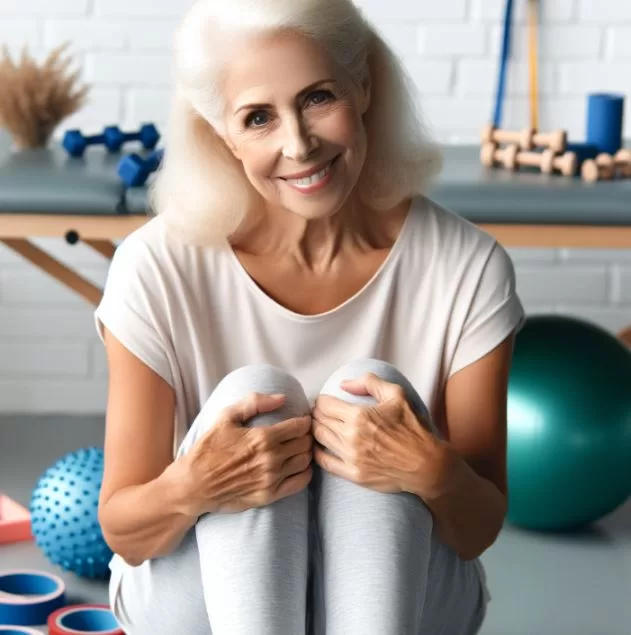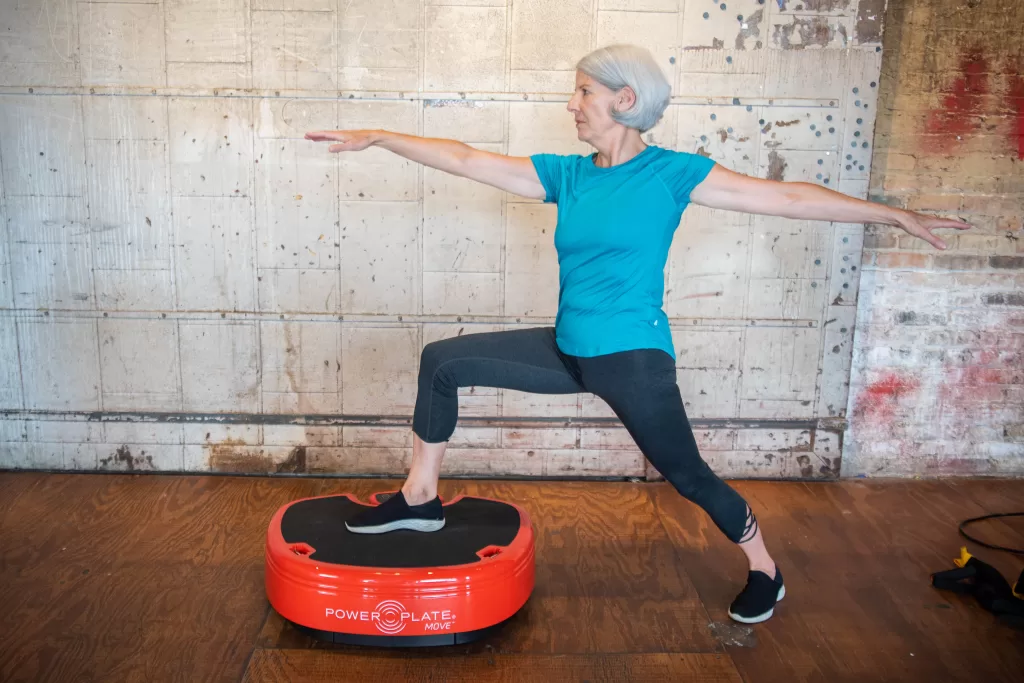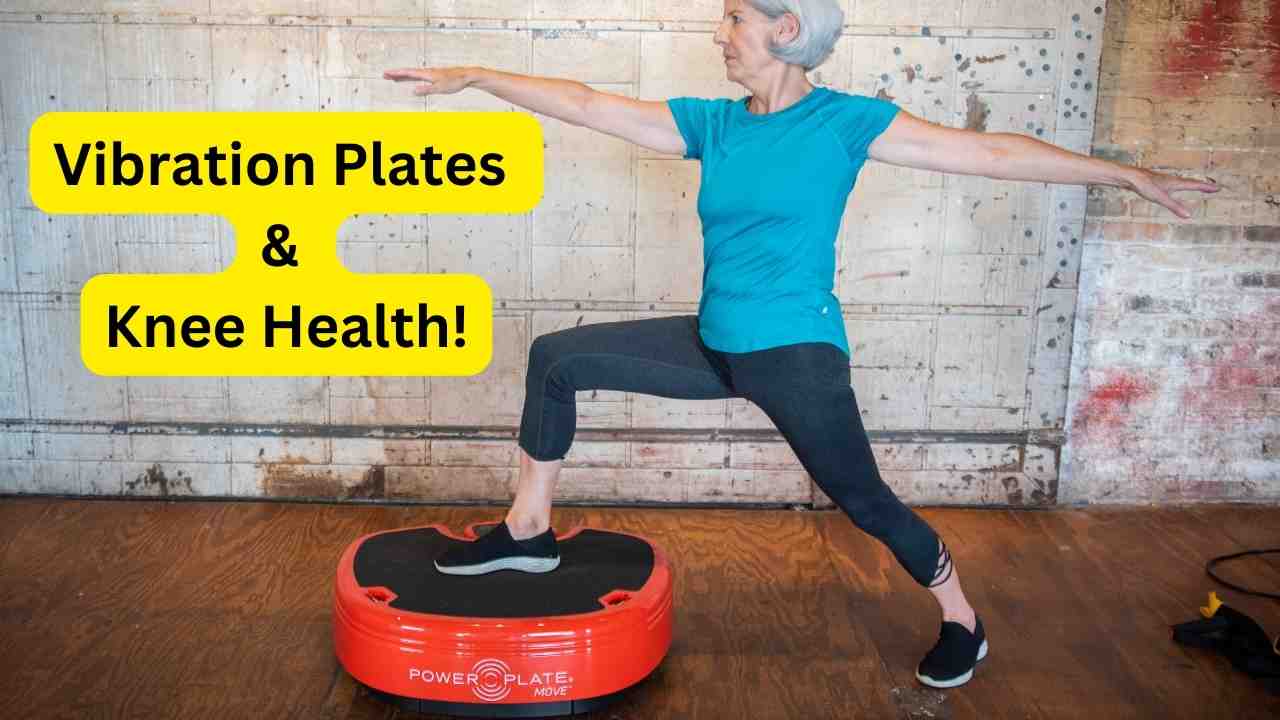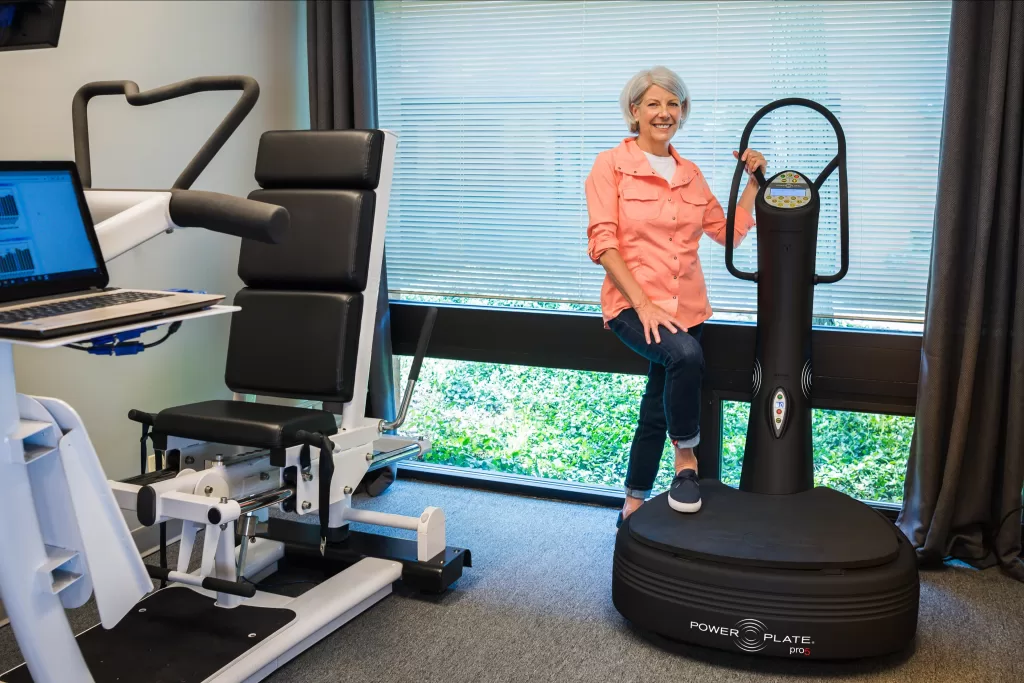
In the realm of fitness, concerns about joint health are paramount, especially when it comes to activities like using vibration plates.
Vibration plates and knee health have gained popularity for their potential to enhance muscle strength and overall fitness, but myths surrounding their impact on joint health persist.
In this comprehensive guide, we delve into the topic of knee-friendly fitness and debunk common myths about vibration plates and joint pain.
By understanding the facts and science behind vibration plates, individuals can make informed decisions about incorporating this innovative technology into their fitness routines while safeguarding their joint health.
Vibration Plates and Knee Health Table of Contents
Understanding Vibration Plates and Knee Health

Before diving into the myths and truths about vibration plates and knee health, it’s essential to understand what they are and how they work.
Vibration plates consist of a platform that generates mechanical vibrations, causing the muscles to contract and relax reflexively.
These rapid muscle contractions stimulate blood flow, enhance muscle activation, and promote various fitness benefits, including improved strength, flexibility, and circulation.
Now let’s cover some myths as they relate to vibration plates and knee health.
Myth #1: Vibration Plates Aggravate Knee Pain:
One common misconception about vibration plates is that they exacerbate knee pain and joint discomfort.
However, research suggests otherwise.
Studies have shown that when used correctly and under appropriate guidance, vibration plates can help reduce knee pain by improving muscle strength and stability around the knee joint.
The controlled vibrations stimulate muscle activation without placing excessive strain on the joints, making vibration plates a viable option for individuals with knee issues.
Myth #2: Vibration Plates Increase Risk of Joint Injury:
Another myth surrounding vibration plates is that they pose a high risk of joint injury, particularly to the knees.
While it’s true that improper use or excessive intensity on vibration plates can lead to strain or injury, when used correctly, vibration plates are generally safe and effective for most individuals.
The key lies in proper technique, gradual progression, and listening to your body’s signals.
By starting with low intensity and gradually increasing duration and intensity, individuals can minimize the risk of joint injury while maximizing the benefits of vibration plate workouts.
Myth #3: Vibration Plates Are Not Suitable for Individuals with Knee Conditions:
Some people believe that vibration plates are off-limits for individuals with knee conditions such as osteoarthritis or ligament injuries.
However, research suggests that when used judiciously and under the guidance of a healthcare professional, vibration plates can be safely incorporated into rehabilitation programs for knee issues.
The controlled vibrations can help improve muscle strength, joint stability, and proprioception, which are essential components of knee rehabilitation.
Additionally, vibration plates offer a low-impact option for individuals with knee conditions who may find traditional forms of exercise challenging or painful.
Truth #1: Vibration Plates Improve Muscle Strength and Stability:
One of the most significant benefits of vibration plates and knee health is their ability to improve muscle strength and stability around the knee joint.
The mechanical vibrations generated by the platform stimulate muscle contractions, engaging the quadriceps, hamstrings, and calf muscles.
As these muscles become stronger and more stable, they provide better support to the knee joint, reducing the risk of injury and enhancing overall joint function.
Truth #2: Vibration Plates Enhance Circulation and Joint Lubrication
Another important aspect of vibration plates is their ability to enhance circulation and promote joint lubrication.
The vibrations stimulate blood flow to the muscles and joints, delivering oxygen and nutrients while flushing out metabolic waste products.
This improved circulation helps nourish the cartilage and synovial fluid within the knee joint, promoting joint health and mobility.
Additionally, the mechanical stimulation provided by vibration plates may help increase the production of synovial fluid, which acts as a lubricant and shock absorber within the joint.
This provides a huge benefit for those seeking solutions to vibration plates and knee pain.
Truth #3: Vibration Plates Offer Versatility and Customization:
One of the key advantages of vibration plates is their versatility and customization options.
Users can adjust the frequency, amplitude, and duration of vibration sessions to suit their individual needs and fitness goals.
For individuals with knee issues, this level of customization allows for a gradual and controlled approach to exercise, minimizing stress on the joints while still reaping the benefits of vibration therapy.
Additionally, vibration plates offer a wide range of exercises and movements that can be adapted to target specific muscle groups and address imbalances or weaknesses around the knee joint.
Tips for Safe and Effective Use of Vibration Plates:
- Start Slow: Begin with short sessions and low-intensity settings, gradually increasing duration and intensity as your body adapts.
- Focus on Form: Pay attention to proper posture and alignment during exercises to minimize stress on the knees and other joints.
- Listen to Your Body: If you experience discomfort or pain, stop immediately and reassess your technique or intensity level.
- Incorporate Variety: Mix up your vibration plate workouts with a variety of exercises to target different muscle groups and prevent overuse injuries.
- Consult a Professional: If you have existing knee issues or concerns, consult with a healthcare professional or fitness expert before starting a vibration plate regimen to ensure it’s safe and appropriate for your individual needs.
Vibration Plates and Knee Health FAQs
Are vibration plates safe for individuals with knee pain or arthritis?
When used correctly and under appropriate guidance, vibration plates can be safe and beneficial for individuals with knee pain or arthritis.
However, as far as vibration plates and knee health are concerned, it’s essential to start with low intensity and gradually increase duration and intensity to avoid exacerbating symptoms.
Can vibration plates worsen existing knee injuries or conditions?
Improper use or excessive intensity on vibration plates can potentially worsen existing conditions, so always listen to your body and start slow.
Disclaimer
Some of the links on this website are affiliate links, meaning that we may earn a commission if you click on the link and make a purchase.
This helps support the creation of free content on this website.
However, our primary goal is to provide you with valuable information and recommendations, regardless of any affiliate relationship.
My opinions and recommendations are based on my honest assessment of the product or service in question.


